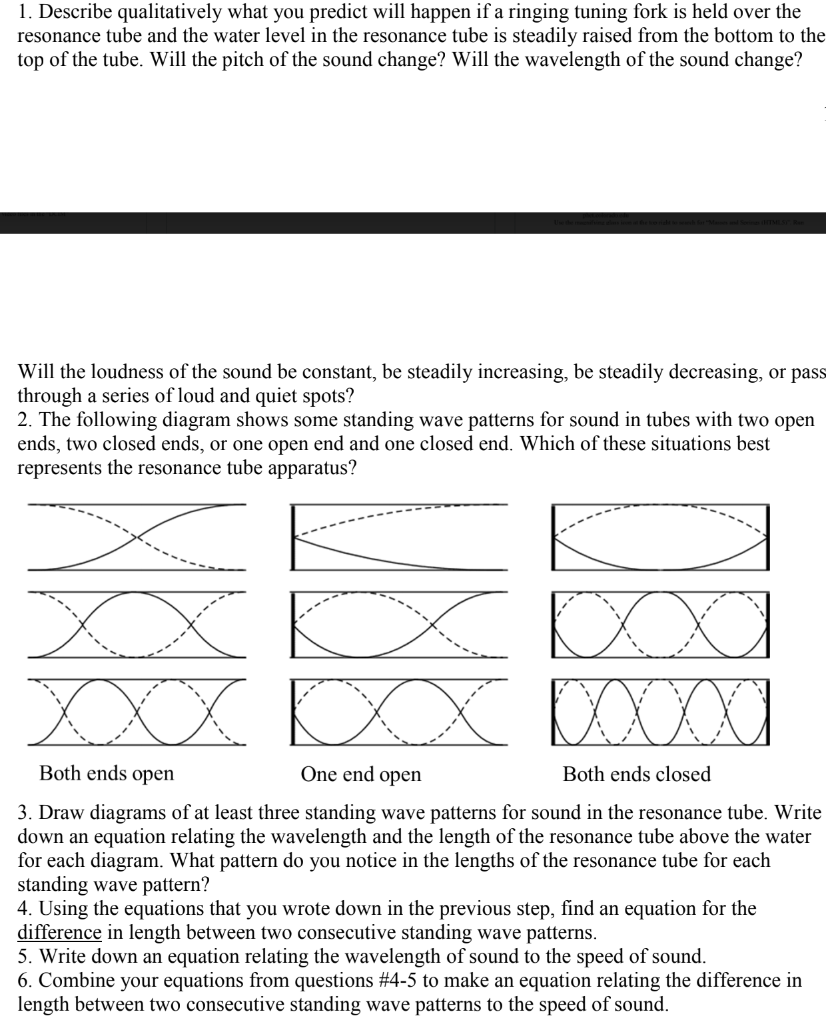The measurement of sound, often considered an intangible phenomenon, can be likened to the meticulous dance of particles, engaging in a symphony of vibrations through varying media. The speed of sound, a fundamental property of acoustics, can be deftly measured using specialized instruments designed to capture the fleeting nature of these oscillations. Among these instruments, the resonant tube, the acoustic Doppler effect apparatus, and the ultrasonic flow meter stand as remarkable exemplars, each possessing distinct methodologies and technical intricacies.
At the very heart of sound measurement lies the resonant tube, often referred to in scholarly circles as the Helmholtz resonator. This apparatus is designed based on the principle of resonance, allowing it to capture the qualitative essence of sound waves. Imagine a glass bottle filled with water; when blown across its opening, the volume of air within resonates, producing a melodious tone. Similarly, the resonant tube exploits this acoustic resonance, where sound waves travel back and forth within its confines. By varying the length of the tube and recording the frequency of the resonant sound waves, one can utilize the equation (v = f cdot lambda) (where (v) represents the speed of sound, (f) the frequency, and (lambda) the wavelength) to deduce the velocity of sound in air at room temperature.
However, the resonant tube is merely the overture in the grand composition of sound measurement techniques. Another compelling instrument is the acoustic Doppler effect apparatus, which elucidates the harmonic relationship between sound frequency and the relative motion of a sound source and an observer. It operates on the principle famously introduced by Christian Doppler, reflecting the shifting tones of a passing train, where the frequency of sound waves compresses as it approaches and dilates as it recedes. In practical applications, an acoustic Doppler device emits sound waves and analyzes the frequency shift upon their return after striking an object in motion, such as raindrops or fish swimming in a stream. By calculating the variance in frequency, one can ascertain both the speed of sound and the velocity of the moving entity, revealing an intricate tapestry of interaction between sound and motion.
Moreover, the ultrasonic flow meter introduces a remarkable facet to the measurement of sound speed, particularly in liquid media. This sophisticated instrument leverages high-frequency sound waves, typically beyond the audible range, to gauge the velocity of fluid dynamics. Picture a serene river; deploying an ultrasonic flow meter into its depths allows researchers to determine not only the flow rate but also the speed of sound through the water. The mechanism relies on the propagation of ultrasonic waves, which are sent and received by transducers positioned strategically. When sound waves traverse the moving fluid, they travel faster downstream than upstream. By analyzing the time differential between these two paths, one can compute both the speed of sound in water and the fluid’s velocity, thus providing a comprehensive understanding of the aquatic environment.
Nevertheless, the inquiry into the speed of sound extends beyond mere instrumentation; it challenges our understanding of environmental factors. Temperature, humidity, and pressure intricately influence the speed at which sound travels. For instance, sound waves travel faster in warmer air than in cooler conditions, akin to how a swift brook meanders through the gentleness of spring warmth. This dependency highlights the necessity for precision in measurements and adjustments based on prevailing atmospheric conditions. Thus, the use of these instruments is often accompanied by meticulous calibrations, ensuring that the readings remain accurate and reliable, regardless of the external variables affecting sound propagation.
Moreover, the unique appeal of sound measurement instruments is not solely in their practicality but also in their capacity to bridge disparate fields of scientific inquiry. They are instrumental in acoustic engineering, meteorology, and even medical diagnostics, wherein ultrasonic devices offer profound insights into bodily structures and functions. The elegance of their design and the sophistication of the physics at play render them pivotal in both theoretical explorations and applied sciences, transforming abstract concepts into tangible understanding.
In the realm of education, these instruments serve as conduits for fostering curiosity and inspiring future physicists. By engaging students with hands-on experiments using devices like resonant tubes or acoustic Doppler instruments, educators cultivate an appreciation for the nuances of sound. The thrill of measuring sound velocity transforms theoretical knowledge into experiential learning, igniting a passion for physics that promotes deeper inquiry into the nature of waves and vibrations.
In conclusion, the quest to measure the speed of sound unlocks a multifaceted domain of knowledge and inquiry. Renowned instruments such as the resonant tube, acoustic Doppler effect apparatus, and ultrasonic flow meter not only offer empirical measurements but also enrich our understanding of acoustics and fluid dynamics. Each instrument, with its unique appeal and operational sophistication, serves as a testament to the intricate dance of sound, elegantly bridging physics with practical applications across diverse fields. As we continue to refine our methodologies and embrace technological advancements, the measurement of sound speed paves the way for innovative scientific explorations, continually expanding our acoustic horizons.










